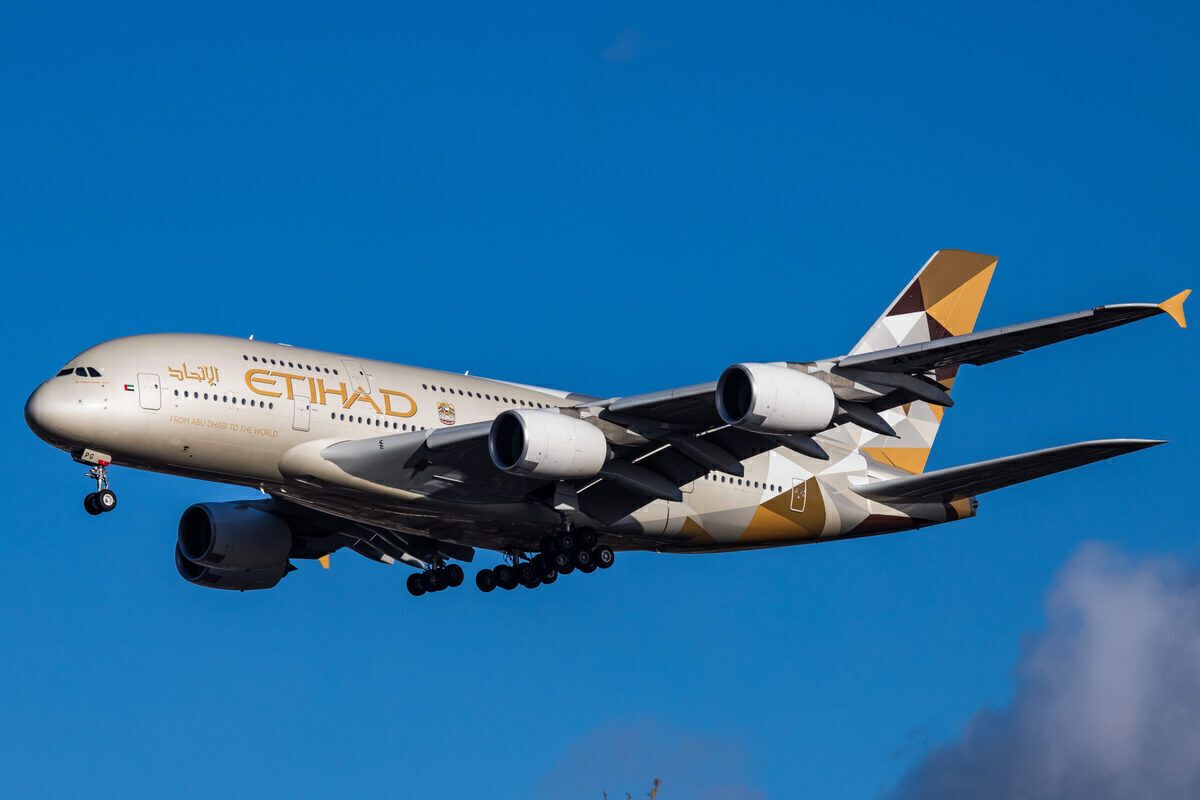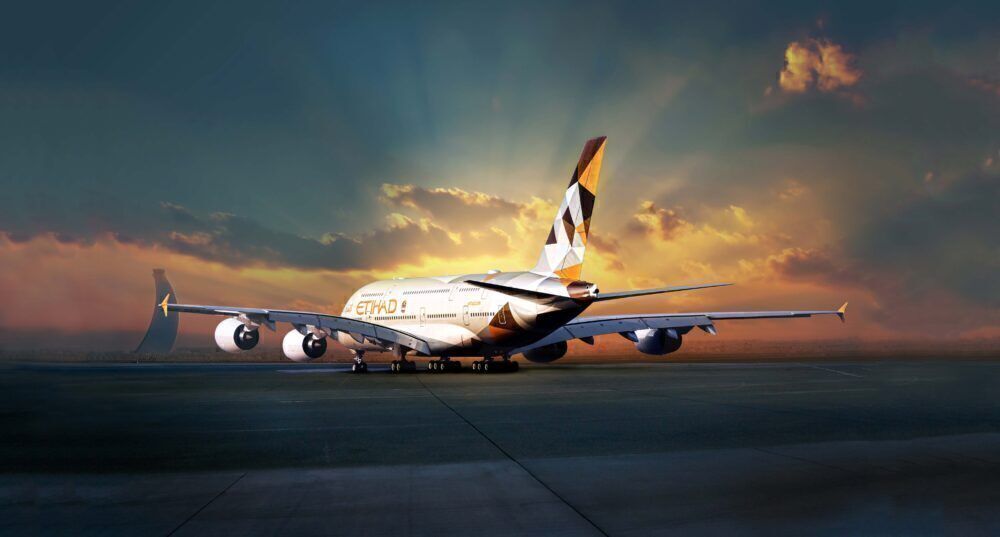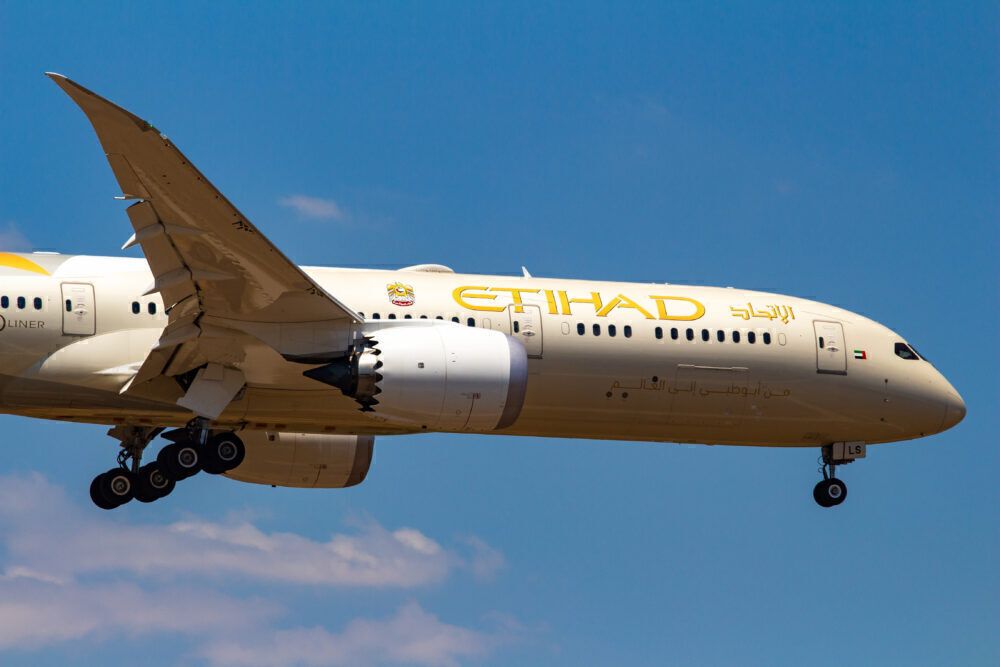The A380 has had a hard time over the past 12 months, with the type largely parked up or retired from fleets altogether. Etihad’s 10 A380s haven’t flown since March 2020, and much doubt has been cast over their future at the airline. Speaking today at the World Aviation Festival, CEO Tony Douglas noted the type has been parked indefinitely, and is no longer seen as a commercially viable prospect.
The A380 is parked up indefinitely
Etihad was one of only a few operators of the A380, with a small fleet of 10 superjumbos. Taking delivery between 2014 and 2017, these aircraft were young, some examples just over four years of age. But now, it seems they may never fly again in Etihad colors.
With the type removed from its website and one aircraft flown to Teruel for long-term storage, the future looked bleak for the A380. Today, speaking at the World Aviation Festival, CEO Tony Douglas made it clear that we will not likely see the A380 with Etihad again. He said,
“Sadly for us, as the pandemic came into play … we made the decision to park our 10 A380s, which are a wonderful product, something I really enjoyed. Nonetheless, they are no longer commercially sustainable. So we have taken the difficult decision to park those machines up indefinitely.”
The CEO was still reluctant to say they would never come back, but the message is clear. Etihad, while retaining its position as a hub carrier, does not see a place for the superjumbo in its future. Douglas spoke extensively about fleet simplification, which will see the airline operating far fewer aircraft types in the future.
Stay informed: Sign up for our daily and weekly aviation news digests.
Simplifying the fleet
In June 2020, the last of its once large fleet of A330s left the airline. Over the years, the airline had flown 42 of the type. Now, in a bid to streamline the fleet for the future, Etihad will no longer operate any A330s.
Prior to the pandemic, the airline had already phased out aircraft such as the A340, the 767 and the 777-200. Now it seems another type is leaving the airline, as the CEO noted it will not fly the 777-300ER beyond the end of this year. Douglas said,
“At the end of this year, the 777-300ER [will leave]. So, you'll see of us a very focused, a very disciplined operating model, which is heavily built around the fleet type of 787 Dreamliner and the A350-1000”
In a change from the strategy of ‘big is beautiful’ and growth as a priority, Etihad’s transformation has taken it in a different direction. Douglas explained,
“We're now into midsize but commercially sustainable and obsessive with customer service. It’s the boutique end that is where we want to operate. In so doing, the statement we've made clear is that the backbone of our fleet, for the medium term, is the 787.”
Etihad already operates one of the largest fleets of Dreamliners in the world, with 40 flying for it currently. The fleet is split between the 787-9, of which it has 30, and the smaller flotilla of 10 787-10s. Douglas sang his praises of the aircraft, noting that not only is it operationally incredibly efficient, but also goes a long way towards Etihad’s sustainability goals.
He also reaffirmed his commitment to the A350, saying it was ‘still part of the plan’. However, the five A350s so far delivered to the airline have been in storage since the transfer of ownership, and are yet to take a revenue flight for Etihad.



